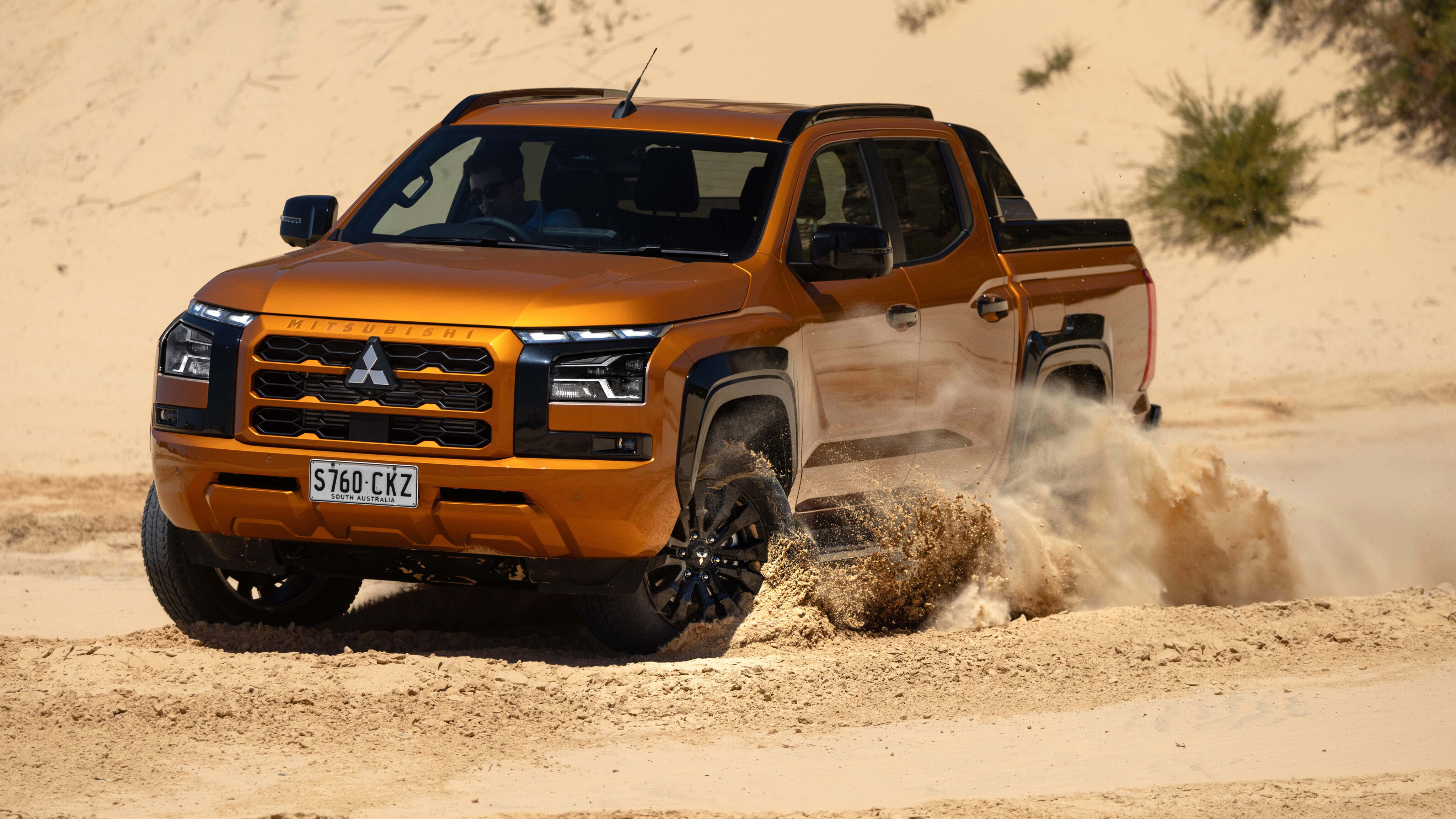
Score breakdown
Things we like
- SUV-like cabin presentation
- Steering feel
- Refinement
- Enhanced towing and payload
Not so much
- Overbearing driver monitoring
- Clunky idle-stop system
- Halo variant would be nice
Mitsubishi has been working on the sixth-gen Triton since 2017 – just two years after the fifth-gen launched – and without wanting to spoil the rest of the review, that lengthy gestation period has been well worth it.
A lot of the final development of the new electric power steering system and chassis was done in Australia by embedded Japanese engineers, too, so like the class-leading Ford Ranger, the new Triton should be bloody well-suited to our tough environment.
Mitsubishi claims the engine is all new but on paper, this is a little tricky to believe as it remains part of the ‘4N1’ family and shares its 2442cc displacement with the old Triton.

We’re told the casting is subtly different and almost every internal part is new; this includes longer conrods, the 250MPa injectors, 15 per cent lighter pistons, and the fairly obvious second turbo.
There’s also an all-new frame (the first truly clean-sheet Triton chassis since 2006) built with stronger steel, an extra cross member and bigger box sections (up from 80x140mm to 145x170mm) resulting in bending and torsional rigidity ratings up 60 per cent and 40 per cent respectively.
It has a bigger footprint, with 50mm extra track width (mirrored in body size) and a 130 mm longer wheelbase than before.

The body is also made exclusively from high-strength steel, helping to keep the overall weight down. That said, the larger new Triton has still put on a few kilos (171kg), now weighing 2170kg (kerb).
A little awkward in pictures, the Triton’s sheetmetal is handsome in real life, with bluff vertical surfaces and confident lines.
The GSR builds on the visual impact with black wheelarch extensions and a body-coloured grille. Our favourite detail is the debossed ‘Mitsubishi’ script above the grille with a CNC-machined texture that will look awesome once it's picked up some dust on a long drive.

The paint finish is distinctly better; the GSR’s Yamabuki Orange metallic paintwork sparkles in the South Australian sun in a way the old car could never hope to. There’s no overspray or dull paint in the door jambs or engine bay.
It’s also built from the ground up with electrification in mind, however, exactly what configuration (pure battery electric, petrol-based plug-in hybrid or a diesel plug-in hybrid) is still up for debate.
For its use case in Australia, a diesel plug-in hybrid with great towing ability and long driving range would be our pick.

JUMP AHEAD
- How much is it, and what do you get?
- How do rivals compare on value?
- Interior comfort, space, and storage
- What is it like to drive?
- How much fuel does it use?
- How safe is it?
- Warranty and running costs
- VERDICT
- Specifications
How much is it, and what do you get?
Now to the elephant in the room: price. The new ute’s ask may cause alarm among existing owners; $6900 more for the $63,840 (before on-road costs) flagship GSR dual cab? That’s a lot of money.
Even at the low end (where the range is currently thin), the ‘traffic controller’ GLX 4x4 dual cab costs $50,490 (before on-road costs).
But here’s the rub: the boggo Triton ships packed with standard equipment. Practical vinyl flooring and scratch-resistant plastics are allied with a 9.0-inch touchscreen, 7.0-inch digital driver’s display, tyre pressure monitoring and driver's seat lumbar adjustment.

Features like these will drop risk levels and fatigue behind the wheel for fleet operators – not to mention minimise back-related worker’s comp claims!
The GLX+ offers a little more equipment from $50,340 (excluding on-road costs) as a club cab.
| In addition to GLX | |
|---|---|
| 17-inch alloy wheels | Front fog lamps |
| Rear differential lock | Rear privacy glass |
| DAB+ digital radio | Reverse autonomous emergency braking |
| Side steps | 360-degree camera system |
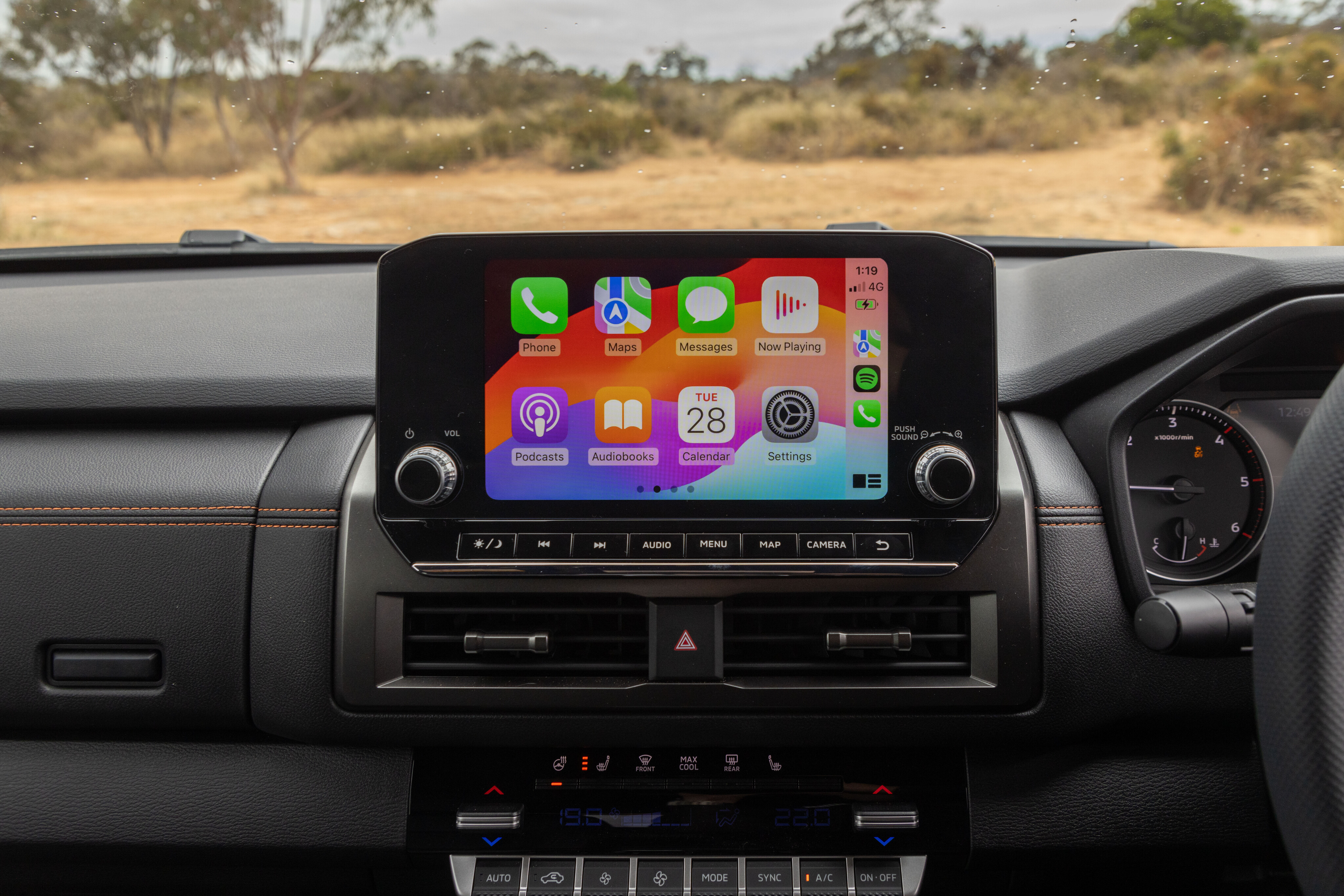
Moving up the range, the GLS is more private-buyer-focused and commands $59,090 before on-road costs as a dual-cab automatic. For another $1500 it can be upgraded with. leather upholstery, heated front seats and power adjustment for the driver’s seat.
| In addition to GLX+ | |
|---|---|
| 18-inch alloy wheels | Wireless phone charger |
| Super Select II 4WD system with 2H, 4H, 4HLc and 4LLC | Tray bed liner |
| Standard-duty rear suspension | Heated, electrically-adjusted side mirrors with LED indicators |
| LED exterior lighting | Mitsubishi-embossed gloss black grille |
| Dual-zone climate control | Terrain control |
| Keyless entry and push-button start | Hill descent control |
| Auto-dimming rear-view mirror | Soft-padded interior surfaces with silver accented stitching |

Finally, the GSR sits atop the range with exclusive Yamabuki Orange paint available.
| In addition to GLS Leather | |
|---|---|
| 18-inch alloy wheels (black) | Roof rails |
| Leather upholstery with orange stitching | GSR-specific carpet floor mats |
| Body-coloured grille | Two dash-mounted cup holders |
| Wheel arch moulding | ‘Dark titanium’ interior accents |
| Styling bar | |

How do rivals compare on value?
The sixth-gen Triton’s pricing aligns it with popular rivals. In the GSR 4x4 dual-cab’s case, that means the Ford Ranger Sport bi-turbo ($65,690 before on-road costs) and HiLux SR5 V-Active ($63,260 before on-road costs).
The Ford includes everything you need to tow from the factory where you’ll have to get accessories for the Triton, but that’s where the Blue Oval’s advantage ends.
On top of the Sport and SR5, the Triton gets tyre pressure monitoring, front seat heating, more off-road drive modes, a 360-degree camera, and tinted rear windows – and you have to pay extra for leather in the HiLux.

Availability of lower-spec tritons is a little lacking right now as Mitsubishi sees the most opportunity in GLS (the previous best-seller) and GSR trims. Manual and cab chassis variants will arrive later.
The Japanese brand expects a richer grade mix at launch with greater demand for GSR and is studying future flagship variants which could include a Ralliart off-road halo or luxurious Ranger Platinum rival.
Visit our Best Utes page to find the right ute for you.
Interior comfort, space and storage
Whether you opt for the GLS (ideally with the $1500 leather pack) or flagship GSR, the cabin will not disappoint.
A lot of Outlander DNA is evident here, with a broad horizontal design emphasising the cab’s extra 50mm of width. Soft-touch materials are far more common than in the old Triton, and the steering wheel is appointed in quality dimpled leather.
Technology takes a massive step with a 9.0-inch touchscreen (from the Outlander) and 7.0-inch digital readout flanked by legible analogue dials. Mercifully, main HVAC controls remain outside the touchscreen with quality knurled chrome switches for fan speed, direction, and temperature.

Apple CarPlay and Android Auto phone mirroring are both wireless, there’s built-in navigation, DAB+ digital radio, and the six-speaker sound system is excellent for a ute.
One of the biggest improvements current Triton owners will notice is the seats. Instead of flat, unsupportive pews that lack adjustment, the new chairs hug you in all the right places with power lumbar support that massively eases fatigue on long drives.
The cloth upholstery (GLX, GLS) is agreeable, but the leather (GLS leather, GSR) is easier to clean and genuinely classy.

But the single cleverest feature? The pop-out cup holders in the dash trim.
Though the minimal centre console appears more architectural than practical, the Triton packs secret stowage with twin gloveboxes, space for four 600ml bottles in the covered centre bin, big cup holders, door pockets that’ll hold 1.5-litre bottles and an A4 binder, USB-A and USB-C charge points, and a wireless charging pad.
But the single cleverest feature? The pop-out cup holders in the dash trim. Press these in and a perfect takeaway coffee holder appears, but they’re dual-purpose.
Taking on Australian feedback, the cup insert slides away to reveal a square space that is the perfect size for a 600ml carton of South Australia’s finest Farmers Union iced coffee. Yes, other utes have a similar design but the jury's out on their iced coffee compatibility.
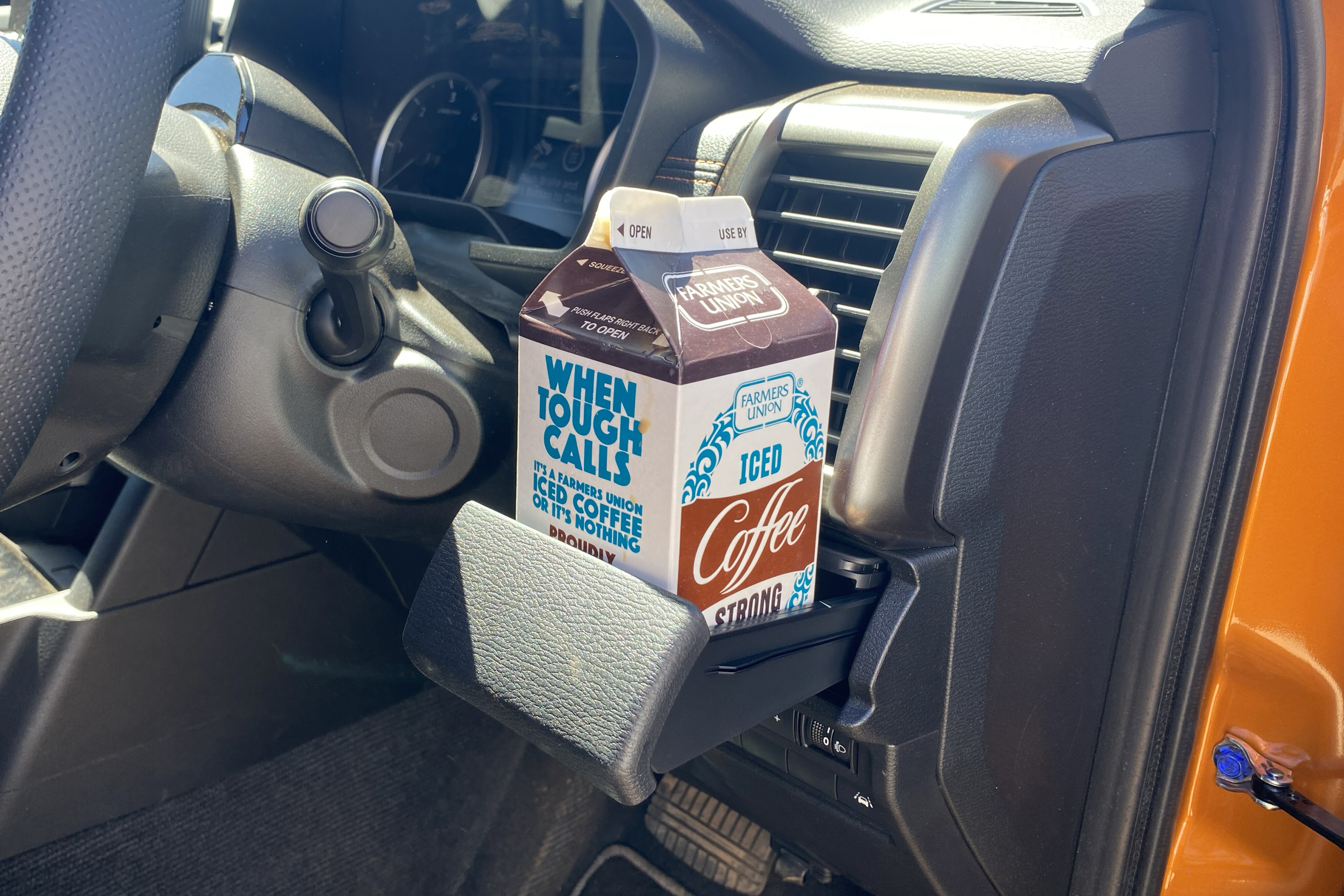
Another pair of USB chargers is accessible from the back seat. It’s still not quite on par with an Outlander for space and comfort, but the new Triton’s second row is a far better place than before.
Squarer door profiles aid ingress and, because the front seats sit 20mm lower, the view out is improved. There’s also a fold-out armrest and the same ceiling-mounted ventilation system as before.
As well as catching up to the field with a 3500kg braked towing capacity, the new Triton also has some solid workhorse credentials. The GSR offers a 1030kg payload in the back and all pick-ups have space for a single 1200x800mm Euro pallet.
Spray-in bed liners, four tie-down points and sports bars are essentially the limit of practicalities. It’s not in the Ranger’s league when it comes to clever touches; rear steps would make it easy to adjust loads in the bed without opening the (undamped) tailgate.

What is it like to drive?
Starting the drive, we left Adelaide airport and headed for the hills in a GSR.
The enhanced refinement was immediately noticeable, the 4N16 remaining hushed and impressively smooth around town as the six-speed auto (chosen for reliability and cost over the Pajero Sport’s eight-speed) shifts slickly.
It’s brisk enough with 150kW (up 17kW) and 470Nm (up 40Nm). That torque figure is a little low next to the Ranger’s 500Nm, but Mitsubishi’s twin-turbo magic means it feels beefier: the Triton produces peak torque from 1500rpm right up to 2750rpm, compared with the Ranger’s narrow 1750-2000rpm band.

Mitsubishi has implemented an idle-stop system in the new Triton which kicks in once the engine is warm.
It may help save a few litres of fuel (officially 0.1L/100km in ADR testing) but could do with some refinement – the system is lumpy and intrusive when switching off and slow to fire back to life when you need to get away from an intersection.
The ride quality on 265/60 R18 Maxxis Bravo A/T tyres was pretty good for an unladen ute and they provided decent roadholding on Adelaide’s twisty mountain roads that would typically be tiring in a dual cab.

Thanks in part to some Australian development, the Triton’s 3.3-turn lock-to-lock electric power steering is about perfect.
It’s light enough at low speeds yet weights up naturally as velocity climbs. Crucially, its on-centre response is calm and accurate, making it easy to correct for crosswinds and cambers on long straight roads. Equally natural was the brake pedal, even though the Triton retains rear drum brakes.
We descended the open and flowing Angas Valley road and turned off at Sanderston to reach Eagle View 4x4 track. The track we encountered was easily dispatched by the Triton with its refined traction control system meaning we didn’t need to engage the rear diff lock on a set of offset moguls.
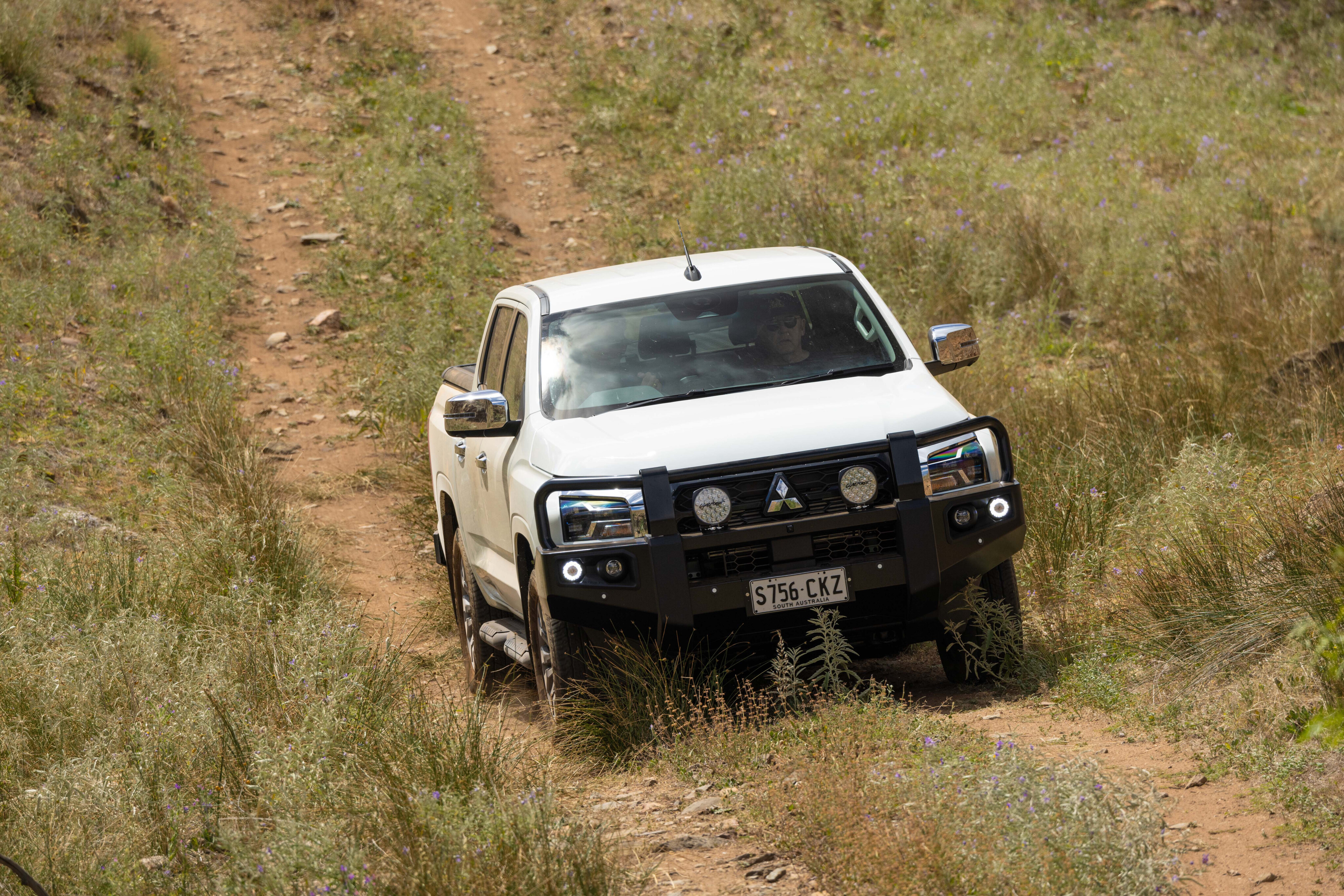
We tried the diff lock on the training course and were delighted by how simply and quickly the Triton's various off-road settings engage.
GLS and GSR trims both get Mitsubishi’s Super Select II 4WD system which includes a centre differential enabling permanent four-wheel-drive running if you need it – handy for roads that regularly transition between sealed and unsealed surfaces or patches of wet and dry bitumen – and is very easy to use.
More modes are now available, including Normal, Eco, Gravel, Snow, Mud, Sand, and Rock which tweak throttle and traction control characteristics to suit the respective terrains.
Of course, in GSR trim the Triton isn’t a total off-road monster and we did catch the side steps and low-hanging differential on some rocks. A factory-modded Ralliart version ought to sort that out. That said, what is impressive is the compliance and control afforded by the new chassis setup.

For the new ute, Mitsubishi upped the damper diameter from 32mm (front) and 28mm (rear) to 36mm all round.
The GSR and GLS also move from five to three leaf springs at the back, while front stroke has been increased by 22mm. There’s even a bespoke tune for Australian and New Zealand vehicles to suit the different use styles here compared to South East Asia.
Unusually, Mitsubishi had a few fifth-gen Tritons hanging around and we were encouraged to directly compare and contrast the new vehicle after our technical challenge.

Getting into the previous car, the seats are flat and the infotainment screen tiny, but it’s the drive that sells you.
The same corrugated dirt road that posed almost no challenge for the new Triton made the old ute’s rear end shimmy and buck. The extra mid-range punch from the twin-turbo mill was obvious yet the new ute is also quieter – in the old Triton, I had to raise my voice at 100km/h to hold a conversation.
Plus, with its longer wheelbase (but only 15mm of additional overall length) the new version is immensely more stable and planted. You could almost be fooled into thinking it was an SUV.
If any of the terms in this section have left you scratching your head, these articles will help bring you up to speed!

How safe is it?
Mitsubishi has engineered the Triton with five-star safety in mind. That means different cross members and construction with areas designed to soak up impact forces in a crash.
But it also means technology, including a driver monitoring system that may end up being one of the new Triton’s biggest flaws.
The gloss black growth poking out the top of the steering wheel watches the driver’s eyes for inattention and drowsiness. A great idea in theory, especially for those long monotonous drives.

It works if you’re a typical body shape and drive with hands at 10-2 or 9-3 but if you like the wrist on top of the tiller look, the system freaks out, assumes you’re not there and beeps like mad.
You can disable the function but thanks to European regulations, it defaults to on every time you fire up the Triton.
For some, this could be a total dealbreaker. That’s a shame because the rest of the safety assists are far preferable to those in the Isuzu D-Max and Mazda BT-50; about on par with the Ranger.

How much fuel does it use?
The new Mitsubishi Triton is rated at 7.4L/100km for a 4x2 auto and 7.7L/100km in 4x4 automatic guise on the ADR 81/02 combined cycle.
It means the 4x4 model is marginally better than its predecessor (7.8L/100km) despite delivering more grunt.
On the launch drive, the trip computer showed 8.2L/100km after a two-hour drive over hilly terrain. All Tritons come with a 75L fuel tank.

Warranty and running costs
Mitsubishi continues with its Diamond Advantage five-year/100,000km basic warranty that extends to 10 years and 200,000km if every service is carried out at a Mitsubishi dealer.
These are due every 12 months or 15,000km and, thanks to no more 48-month/60,000km valve clearance adjustments, the new ute is a hint cheaper to service over five years at $2445 on the capped-price schedule.
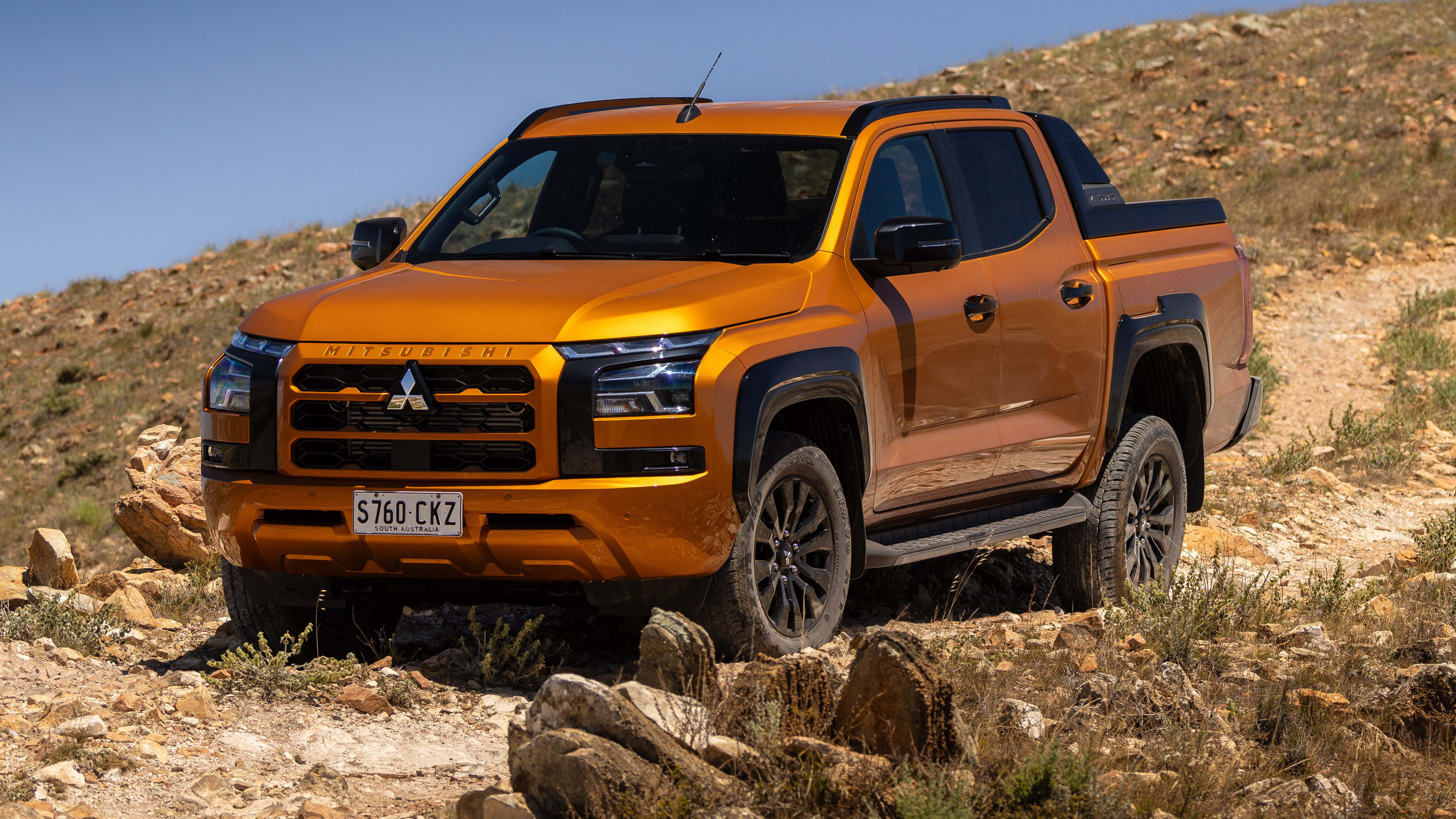
VERDICT
It’ll only take five minutes of driving to realise just how far the new Triton has come.
A few small faults such as the slow idle-stop system don’t spoil the experience, but depending on your driving position and threshold for annoying beeps, the driver monitoring system may be too much to bear.
That said, the new Triton is so much more refined, better finished, quieter, more capable, bigger, and full of the latest technology. All this easily makes up for the price increases and, to be frank, the new ute makes its predecessor feel more like a $30,000 used car than last year's model.
Is this Triton good enough to vanquish the Ford Ranger and Toyota HiLux though? You’ll have to wait for our upcoming comparison for that verdict.
| 2024 Mitsubishi Triton GSR specifications | |
|---|---|
| Price (drive-away) | $63,840 + on-road costs |
| Drivetrain | |
| Engine | 4cyl, 2.4-litre, twin-turbo diesel, direct-injected |
| Compression ratio | 15.2:1 |
| Drive | Selectable 4x4 w/ torsen centre diff and low-range transfer case |
| Power | 150kW (@3500 rpm) |
| Torque | 470Nm (@1500-2750 rpm) |
| Gearbox | 6spd automatic |
| Chassis | |
| L/W/HB | 5320/1930/1795mm |
| Wheelbase | 3130mm |
| Weight (tare) | 2170kg |
| Payload | 1030kg |
| Fuel/tank | Diesel / 75L |
| Economy (combined ADR81/02) | 7.7L/100km |
| Suspension | Front: Double wishbone | Rear: Live axle, three leaf spring |
| Steering | 3.3-turn Electric power-assisted steering |
| Front brakes | Ventilated disc |
| Rear brakes | Drum |
| Tyres | Maxxis Bravo Q/T |
| Tyre size | 265/60R18 |
| Safety | |
| ANCAP rating | Unrated |
| 0-100km/h | 9.5-10 seconds (estimated) |
Score breakdown
Things we like
- SUV-like cabin presentation
- Steering feel
- Refinement
- Enhanced towing and payload
Not so much
- Overbearing driver monitoring
- Clunky idle-stop system
- Halo variant would be nice

COMMENTS